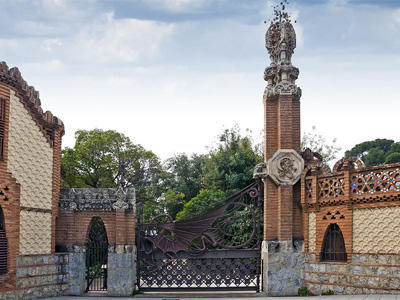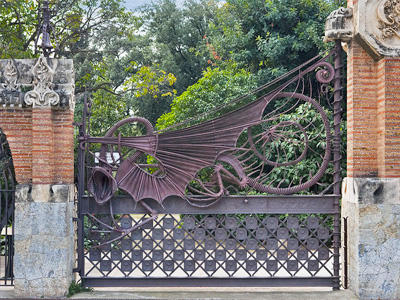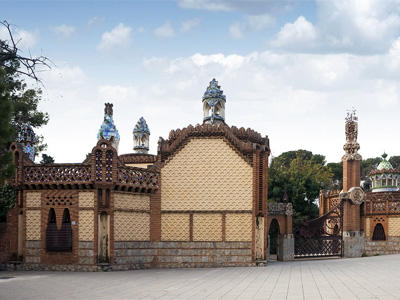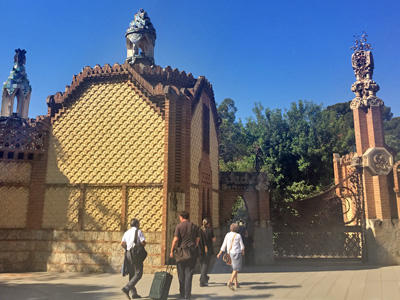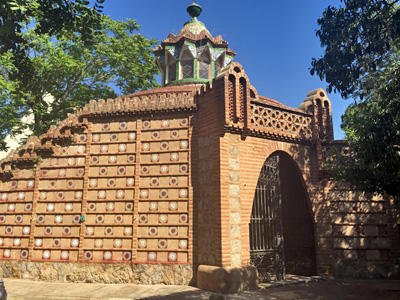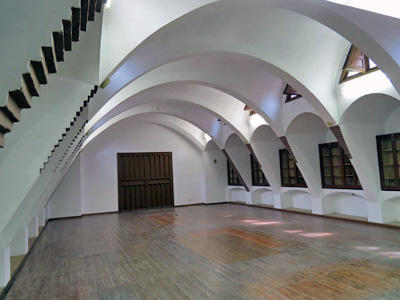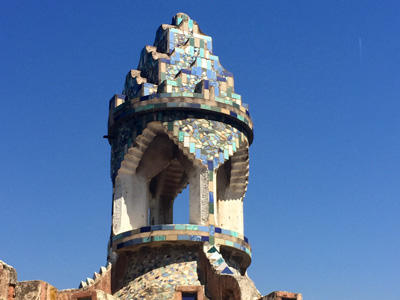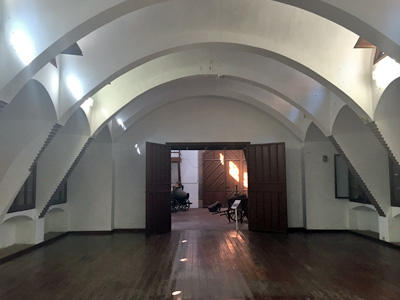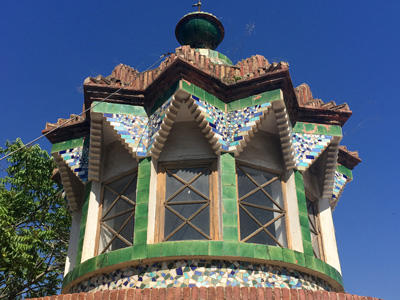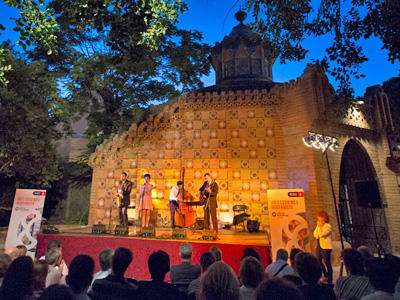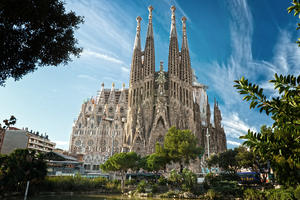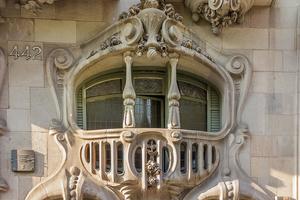Güell Pavilions and Garden
Site History and Significance
An Early Work of a Modern Master
The Güell Pavilions in Barcelona's Pedralbes neighborhood are an early work of the modern master Antoni Gaudí (1852–1926). The pavilions and the garden were designed at the behest of Eusebi Güell, who would become the young architect's most important patron, and were built between 1883 and 1887. Gaudí designed two pavilions, a stable, and a gatekeeper's lodge on either side of an elaborate wrought-iron gate depicting a fanciful dragon that led into the expansive Güell estate. The design was inspired by the myth of the Garden of the Hesperides, which, in a poetic retelling by Jacint Verdaguer that was popular with Gaudí and the Güell family, was interwoven with the history of the origin of the Catalan people.
The Güell Pavilions are an example of modernista architecture. Not to be mistaken with modern architecture, modernismo is the name given in Spain to the Art Noveau style that flourished in Catalonia at the turn of the century; Modernista is the adjective form of Modernismo. The buildings at Güell contain many elements of Gaudí's signature building style, including parabolic arches and Catalan vaulting, and are topped by lanterns faced with trencadís, or fragments of ceramic tiles, plates, and other items. In accordance with Güell's will, the estate was given to the Spanish Royal Family and converted into a royal palace in 1918. The site was later acquired by the University of Barcelona during its expansion into this area in the 1950s, and it now forms part of the Avinguda Diagonal campus of the university.
Our Involvement
2014 World Monuments Watch
The pavilion and gardens were included on the 2014 World Monuments Watch in order to garner resources to improve public access to the site. As a result of inclusion on the Watch, the University of Barcelona (the owner) and the city's Municipal Institute of Urban Landscape and Quality of Life signed an agreement by which the Municipality of Barcelona would restore the buildings in exchange for their use for ten years. A master plan was also approved, scheduling the restoration phases, defining a new access to the site for visitors, and expanding the use of the site for university events.
Access Improvement and Education Initiatives
In late 2015, both the gardens and the stables were opened for tourism, education, and civic activities, although the gatekeeper’s house remained closed to the public. While the stables had been restored by the Spanish Ministry of Culture before the inclusion of the site on the Watch, their interiors are in need repairs.
In June 2015, a Watch Day event was celebrated as part of a special session of an international congress on Barcelona’s Modernismo, which was organized by the nonprofit Art Nouveau European Route. The daylong event was held in the former stable, and included lectures and an outdoor concert and reception.
With support from American Express, WMF developed several educational initiatives to increase awareness of the significant Modernista buildings of Barcelona. An interactive app allows visitors to learn more about the Catalan Modernista buildings scattered throughout Barcelona. In December 2018, a book entitled Gaudí & Trencadís Mosaic was released, featuring experts from the University of Barcelona exploring the history of the pavilions and the trencadís technique. A traveling exhibition by the same name supported by WMF was based upon this book. The restoration of the Pavilions’ iconic Dragon Gate will also be supported by WMF.
Learn More
World Monuments Fund safeguards cultural heritage around the globe, ensuring our treasured places are preserved for present and future generations.
Sign up for our newsletter to receive regular updates on our projects, stories from the field, upcoming events, and more!
![]()
World Monuments Fund’s work at Güell Pavilions and Garden has been made possible, in part, by support from American Express and from Nora McNeely Hurley and Manitou Fund.

